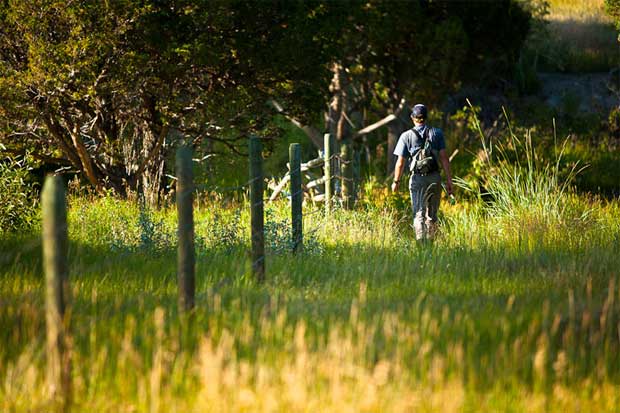Fly Fishing Jazz: Stories Minus the Hero Shots

Kyle Zempel photo
Fly-fishing photographer Tim Romano will tell you that getting a photo of me holding a fish (the classic “grip ‘n grin”) is like pulling teeth. Timmy is my partner for the “Fly Talk” blog, as well as here at MidCurrent and with Angling Trade magazine. We’ve rolled literally thousands of miles together and made many wonderful stories, catching tons of fish on the fly in the process.
Oh, those cheesy photos exist, and Tim took more of them than anyone else. But they bother me.
You see, I’m not a grip ‘n grin man. I prefer to fish from the shadows, and stay in the shadows, even after I land something big. I have a face that’s made for radio, and a passion for fly fishing that’s rooted somewhere that can’t be captured, no matter how many megapixels are devoted to it.
Jazz trumpeter Miles Davis was notorious for turning his back on his audiences. He was all about the notes and the music, and how those things all came together. A lot of jazz insiders I’ve spoken with (some who knew Miles personally) have conceded that Davis was a pompous ass. How can you turn your back, literally, on people who have paid to see you perform?
And how can you write about fishing without hefting a creature for the camera in a way that clearly spells out, “been there, done that?”
It’s simple, actually. All you have to do is let yourself appreciate the experience for what it’s really worth. If that’s something you choose to share, and you have the chops to do so, you can trust that it will happen in the words, and not the photo.
Sometimes, in fact, the literary aspects of describing chasing, tricking, and landing a fish on the fly can be spoiled by the hero shot. Sometimes, recognizing and writing about the things that make such a connection happen in the first place is far more valuable than the end shot… at least when the descriptive writing is good.
They say a picture is worth a thousand words, and that’s often true. But in this day of blogs, and social media, and magazines clinging to survival, I’d say a great story is worth a thousand pictures.
Never, in my experience and opinion, is the telltale photo that makes or breaks a truly great story a “grip ‘n grin.” Those photos are usually cover-ups for the less-than-literary. Take that for what it’s worth, but respect the writer who chooses to live in the shadows and focus the spotlight on the story itself. Minus the hero shots. Minus the cliché. After all, the real emotions, as in jazz music, live and thrive in the shadows. And they always will.











